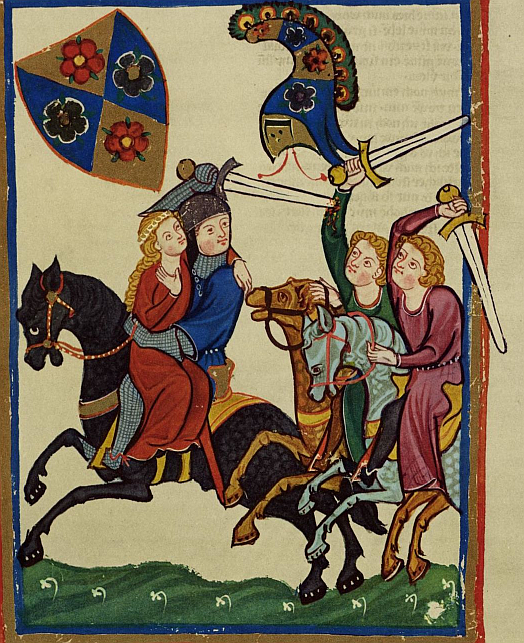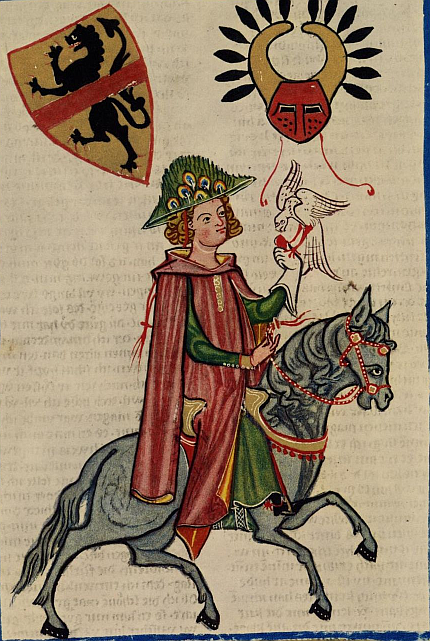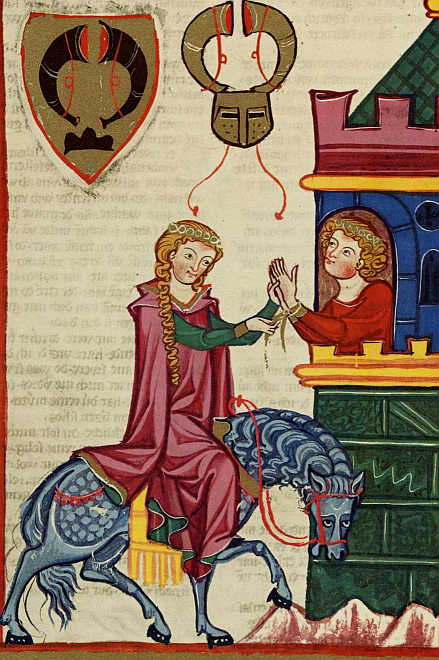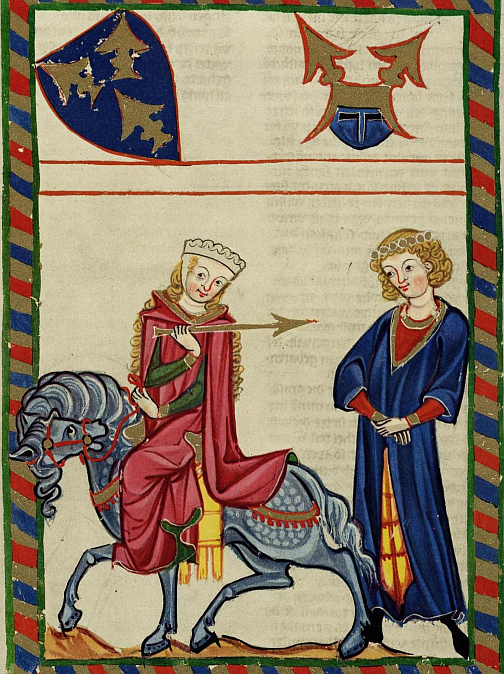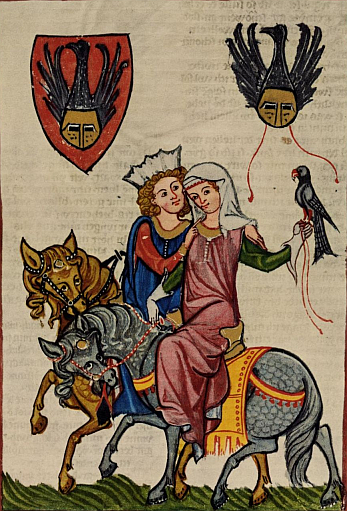So - there was discussion already about the riding slits, and how folds fall in dresses with and without a middle gore, and then I got a question via Instagram about women on horses. The examples given are taken from the Codex Manesse, which is the very splendid, very famous illuminated manuscript in the Uni Heidelberg (here's the full digitised MS).
There are three women on horses in the book's images: on fol. 69, fol. 183v, fol. 251, and fol. 316v. The last is the easiest, because the lady in question is not sitting astride, but sideways, and she's held by a man sitting in the saddle as you'd expect him to:
Now, the others are more difficult to gauge. First of all, for comparison, a man dressed in a riding coat (Reisekappe), sitting on a horse, from the same MS:
That is a rather typical garment for travelling, and it - like the tunic worn beneath it - definitely has a riding slit cut in here. Both fall very smoothly, with almost no folds, and certainly no bunch-up folds to be visible.
For the women sitting on the horses, it looks different.
This is actually the only one of the three women where I'd be sure that she is sitting astride. There is one foot definitely visible, and it's in the correct position for medieval riding. She's also looking straight ahead with a straight body position.
Note how the fabric drapes over her leg, and how a fold comes down from under her butt behind her knee towards her ankle. My suspicion is that the bunch-up problem was solved here by having a really generous amount of fabric in the dress - so there's enough both in width and length of the dress to make it work.
For the next two women, there's also folds draping around their legs, and a cascade of folds going down under the butt towards the knee.
She's either sitting astride and turning backwards towards the man, or she is sitting sideways in the saddle. I lean towards astride, but I'm not completely sure. Unfortunately, all her feet are hidden.
This lady is sitting even more sideways, with really curious folds of the garment. They might be intended to show bunching up - but the rest of the folding actually looks a bit more like sitting sideways to me.
There's an image in a British Library MS that shows, very clearly, an un-slitted dress, with the wearer sitting astride, as it drapes over the horse.
As far as I can tell, there's thus two possible solutions to the bunch-up problem: Either having garments with sufficient width and length to cover everything that is supposed to be covered even when adding part of a horse to the equation, or sitting sideways. Another thing that would be interesting to test with reconstructed garments - and some horses with reconstructed saddles...
